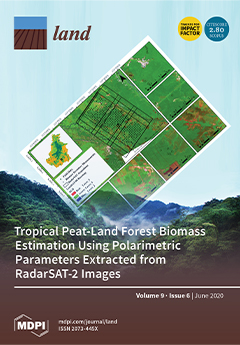Resources
Displaying 1436 - 1440 of 2258Implications of Customary Land Rights Inequalities for Food Security: A Study of Smallholder Farmers in Northwest Ghana
Inequalities in land rights exist globally, both in formal and customary settings. This is because land rights are either strong or weak, and held by various categories of people. The weaker variants of the inequalities tend to stifle tenure security, reduce land use, and threaten the food security of those dependent on the land for survival. This paper investigated the implications of customary land rights inequalities and varying tenure insecurity for food security among smallholder farmers in northwest Ghana.
Benefits Are Limited with High Nitrogen Fertiliser Rates in Kikuyu-Ryegrass Pasture Systems
Nitrogen (N) fertiliser is applied to pastures in dairy farming systems to ensure productivity, but it is an expensive input that could be damaging to the environment if used excessively. In the southern Cape region of South Africa, N fertilisation guidelines for pastures were developed under conditions different to current management practices, yet dairy producers still base fertiliser programmes on these outdated guidelines. This study aimed to determine the efficiencies of N fertilisation.
Peace, Land, and Bureaucracy in Colombia: An Analysis of the Implementation of the Victims and Land Restitution Law from a Multiscale Perspective of State Bureaucracies
This article presents an analysis of the complexities implied by the implementation of the Colombian land restitution policy, as an example of the way in which the state works in its day-to-day practice. The document highlights the role played by the bureaucracy of “land” in the management of the so-called post-conflict setting. It is constructive in showing the multiscale nature of the state, whose operation cannot be understood outside the various levels and scales that compose it.
Utilizing Remotely Sensed Observations to Estimate the Urban Heat Island Effect at a Local Scale: Case Study of a University Campus
The urban heat island (UHI) effect has become a significant focus of research in today’s era of climate change, and a key consideration for the next generation of urban planning focused on green and livable cities. UHI has traditionally been measured using in situ data and ground-based measurements. However, with the increased availability of satellite-based thermal observations of the Earth, remotely sensed observations are increasingly being utilized to estimate surface urban heat island (SUHI), using land surface temperature (LST) as a critical indicator, due to its spatial coverage.
Bottom-Up Perspectives on the Re-Greening of the Sahel: An Evaluation of the Spatial Relationship between Soil and Water Conservation (SWC) and Tree-Cover in Burkina Faso
The Re-Greening of the West African Sahel has attracted great interdisciplinary interest since it was originally detected in the mid-2000s. Studies have investigated vegetation patterns at regional scales using a time series of coarse resolution remote sensing analyses. Fewer have attempted to explain the processes behind these patterns at local scales. This research investigates bottom-up processes driving Sahelian greening in the northern Central Plateau of Burkina Faso—a region recognized as a greening hot spot.


